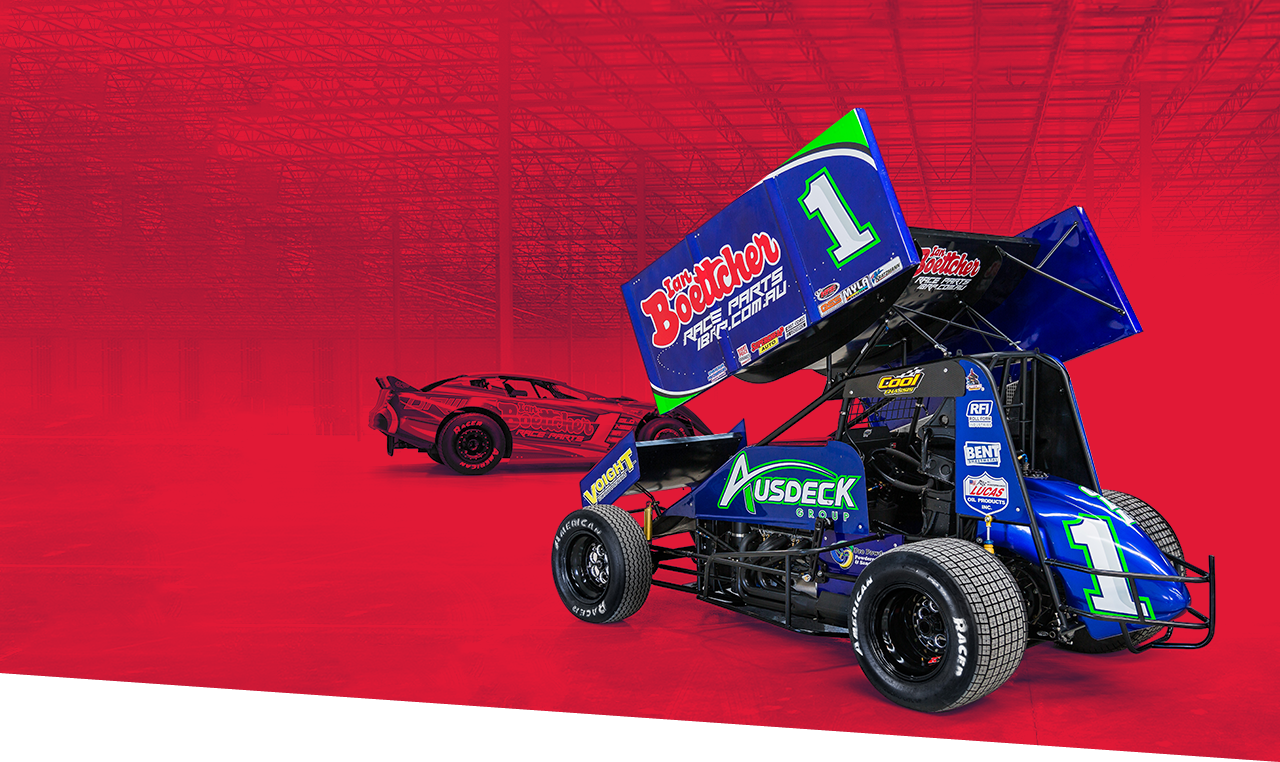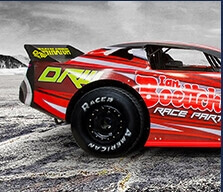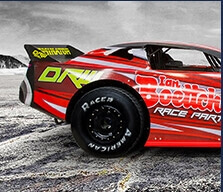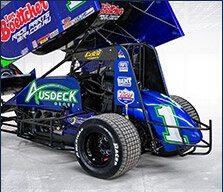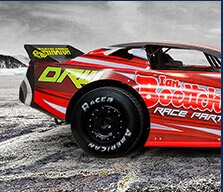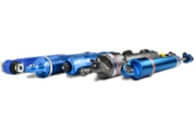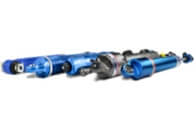ian boettcher race parts
We are committed to bringing the best parts and exceptional service to all our customers
Who we are
We are a family owned business who have been in Motorsport Retail for over 15 years. Being a family business who also race, we strive for excellence in customer service and as racers ourselves know what it takes to reach the pinnacle in racing. Our Sales team at Ian Boettcher Race Parts has a great combination of experience and youth who have been involved in Motor Racing as drivers, car owners and crew members of successful race teams.
ELF Race Fuels
For more than 45 years, ELF has been a competitive, innovative and successful brand. ELF products will allow you to achieve excellence.
Dominator race wear
We can help with your custom fabrication requirements. whether it be a small welding job or work required.
Latest From the Blog
30.01.20
OMP Racing now available at IBRP!
OMP Champ-R The OMP Champ Fibreglass Seat features a rigid yet lightweight shell, ideal for a huge range of competition installations. The Champ has been developed to provide a popular and comfortable ergonomic design which includes removable lumbar and leg support. The Champ contains medium height bolsters offering moderate yet secure lateral support, whilst has been designed to be HANS compatible and FIA Approved for ultimate future flexibility of use. The Seat includes 5 harness slots ensuring a wide range of harnesses can be chosen and is compatible with the OMP side mounts.
Read More
30.01.20
Brake Tech: Brake Cleaner
Be Extremely Careful When Using Brake Cleaner! The following article outlines some very serious repercussions that can arise from less than prudent use of brake cleaner. Normally a very effective degreaser, it can turn deadly when heated. Read on! Yep, I thought I was a goner this time! How simple it was to get in trouble. After seeing and reading so many warning labels, we tend to no longer pay the many heed. We buy chemicals and sprays at a local parts house and think "How can this be so bad health-wise if I'm buying it over the counter?" Here's how a small whiff of smoke almost dropped me where I stood. I had a rush job to do welding four diesel tanks. I had to patch where they were pitted by road salt corrosion. Normally, I spray a little carb cleaner on the spot I'm going to weld, wipe it off , and then preheat the area with an acetylene torch to get rid of any solvents. Where I normally get carb cleaner was sold out, so I got a can of brake cleaner and went through my regular routine. To be on the safe side, I even had the shop door open and the exhaust fan on. I started TIG-welding on Thursday afternoon and had no problem at first. When I started welding across a really pitted area I found a couple of drops of cleaner that were lurking in a deep dimple. As I came close to the cleaner, a small puff of white smoke popped up, and I almost passed out. I made it outside and sat for awhile in the fresh air. After about 10 minutes, I went to the office and sat at the computer to check the warnings on the brake cleaner can I used. That's when my whole left side started shaking for about 10-15 minutes. (I found out later I was having a seizure.) When I was able to control myself again, I read the can's warning: "Vapors may decompose to harmful or fatal corrosive gases such as hydrogen chloride and possible phosgene." After reading about hydrogen chloride, I started researching phosgene. The active chemical in the brake cleaner is tetrachloroethylene. When this chemical is exposed to excessive heat and the gas argon, which is used in MIG and TIG welding, it produces phosgene. Phosgene gas can be fatal with a dose as little as four parts per million: basically a single small puff of smoke. Symptoms can be delayed from six to 48 hours after exposure. There is no antidote for phosgene poisoning. If you do survive, the long-term effects can be chronic bronchitis and emphysema. My breathing still was hard a few hours later, but I felt a little better, so I didn't go to a hospital. The chlorine taste and smell in my nose and mouth were still strong. About midnight, I started coughing and my chest started hurting, but I thought that this would pass after a night's sleep. The next day (Friday), the symptoms got worse and my kidneys started hurting, so I drank a bunch of liquids and cranberry juice. For the next four days, I was constipated and only urinated a lot of clear fluid with no smell. Though sometimes I felt okay, I was really in a lot of pain on and off for the next several days, as well as weak and tired. By the next Monday, nine days after the poisoning, I lost all balance. I was confused and could hardly talk, so I finally went to the emergency room. My symptoms were low oxygen level, sugar levels out of control, vertigo, and I was hurting badly in my entire chest. I was admitted and put into ICU. My kidneys had probably shut down for those first four days. My lungs were damaged, so I had to be on oxygen. I had to on insulin to keep my sugar in check. Since there is no antidote for phosgene, all I could do was try to rest and hope I got better. After CT, MRI, EKG, and EEG tests, as well as several blood tests it looked like, at least for now, there is no permanent damage. However, the MRI showed fluid in my sinuses and a buildup of fluids near my brain. The phosgene scarred my sinuses, which then became infected. The three doctors I saw said I was really lucky to make it. After four weeks, it appears that I may have emphysema and chronic bronchitis. I'm on nasal medicine and an inhaler. My sinuses are severely scarred and my smell nerves are damaged. I still have that awful chlorine taste and smell. I may also have pancreas damage. The insulin that I was taking had little effect on my sugar levels, so I'm now on some stronger medicines. So why am I telling you all this? I hope to save someone from an easily avoidable severe illness or even death. The cleaning sprays commonly found in thousands of bike shops across the country can be just as dangerous if improperly used. Read the labels and warnings! Look up the chemicals you use. Just because you got away with it before, doesn't mean you won't get in trouble the next time. First published in American Iron Magazine Used with permission of Mr. Dude, who says "pass it on!"
Read More
29.01.20
HANS or FHR what’s the difference?
Well, quite simply, very little! FHR stands for ‘frontal head restraint’ – and from now on is the name you’re probably going to see used most often when referring to the device that used to be known as a HANS (head and neck support). HANS is now a trademarked term – so only certain manufacturers are allowed to use it. It’s really the same thing as asking “what’s the difference between a Hoover and a vacuum cleaner?” Are some FHR Devices better than others? This is a common question that we get from customers, and the answer is that it really depends on what you mean by ‘better’! All FHR devices are designed to offer the same level of protection in the event of an incident – however, some weigh less than others (and it probably won’t surprise you to hear that these tend to be the more expensive models in terms of construction)! In a professional racing environment where weight is more of an issue than budget, this means that important savings can be made – whilst club man competitors are offered the same level of protection at a more affordable price. The key is really to ensure that all the components of your FHR device (or any safety-related system for that matter) consist of genuine products. Why do I need an FHR Device? Once you understand the benefits that an FHR device can bring to you, the question you’ll probably be asking yourself is actually ‘why would I not buy one?’! Quite simply, these things save lives. If you are unfortunate enough to be involved in an incident during a race and you are not wearing an FHR device, then your harness is likely going to do its job and stop your body from moving forward. But think about what your head will be doing whilst all of those G-forces are resolved. Whilst your body itself is arrested by your harness, without an FHR, there is nothing to stop your head from snapping forward – which can place an immense strain on your neck. Add to this the fact that your head is already being made heavier than normal by the added weight of your helmet, and you have a recipe for disaster. This type of impact can cause Basilar skull fractures – a very specific type of fracture that is often associated with motorsport. Unfortunately, these types of fractures can be fatal in some cases, and have claimed the lives of many top competitors over the years – Roland Ratzenberger and Dale Earnhardt Senior to name just two. An FHR device provides a means by which your head will be stopped from travelling forward in the event of sudden deceleration – taking the strain away from your neck and dissipating it in a controlled manner. This provides an excellent defence against the type of skull fractures that have claimed so many lives over the years – which is why FHR devices are now mandatory in the vast majority of racing series. FIA-approved FHR Devices As with any critical piece of safety equipment, the FIA has laid out regulations regarding the use of FHR devices. The latest of these is FIA 8858-2010. How many degrees of recline do I need? You may have noticed that FHR devices are available in a number of different ‘reclines’. This is important where your comfort is concerned – so we advise that ideally you should pay a visit to our Superstore in Wrexham and have one of our expert sales staff show you the range to let you try on a few options. Obviously, this isn’t always possible – and the world isn’t exactly bursting at the seams with Motorsport Superstores full of FHR devices – so below we’ve included a rough guide that will tell you which angle will most likely suit the type of racing that you are doing. If you compete in multiple formulae, then you might be interested in the Simpson Hybrid devices. These FHR devices are not angle specific and allow the driver to be comfortable at any angle – no matter what type of car you are in. Ten Degree Recline FHR devices with a ten degree recline are the most upright on the market. Whilst some circuit racing competitors may find that this very upright seating position suits them, more often than not, ten degree FHRs are purchased by rally competitors – where an upright position is very common – especially amongst co-drivers. Twenty Degree Recline Twenty degree FHR devices tend to be our top sellers. This angle suits the majority of people who are competing in saloon, sports car, or historic racing. Because of the angle’s popularity, you will find that the majority of FHR devices tend to be available with it as an option. Thirty Degree Recline If you drive a single-seater race car, then the likelihood is that you will be best suited by a thirty degree FHR device, due to its slightly shallower angle. Forty Degree Recline Forty degree FHR devices are the shallowest angle on the market. These models tend to be ideal for use in single-seater racers such as F1 and F2 cars – where the seating position is extremely reclined. As such, it tends to be the case that the models available are towards the top end of the market. What is a hybrid FHR device? Rather than using the established over-the-shoulder harness method of securing the head, a new breed of FHR Systems from Simpson Motorsport uses an innovative series of straps around the torso to provide protection, not only in the fore and aft directions, but also against side impacts – where the head is most likely to be forced left or right. This is of particular interest to drivers of saloon and rally cars – where side impact protection for the head is often limited when compared to a single-seater formula car. FHR-Specific Seats and Harnesses If you’ve spent any time browsing our website, you’ve probably noticed that some race harnesses are advertised as being FHR specific. Whilst these models can offer certain advantages to the FHR user, they are by no means essential. In the case of FHR-specific harnesses, what you are actually getting is a harness that is narrower (2″ rather than the usual 3″) in the area where it passes over the FHR device. This is helpful, in that it often makes it easier to fit the FHR correctly – but you must remember that such harnesses are only allowed when used with an FHR System. These are by no means a required fitment, but rather something that you may want to consider if you’re building an FHR-specific setup in your car. Assuming that it is set up correctly, a 3″ harness will be perfectly safe for use with an FHR device – it’s simply that 2″ FHR-specific models make that correct set up easier to achieve. “These are by no means a required fitment, but rather something that you may want to consider if you’re building an FHR-specific setup in your car” FHR specific seats – such as the OMP Champ-R are simply seats which have been designed with frontal head restraint systems in mind. Whilst this again ensures that any interaction between the seat and FHR device is optimised, it is not something which is necessary for the use of such a system – and in fact, more or less any seat which features harness holes is compatible with FHR use.
Read More
OUR COMMITMENT
Ian Boettcher Race Parts are committed to bringing the best parts and exceptional service to all it’s customers. As racers ourselves we know that having the right part for the right job can make all the difference. That is why at IBRP we only stock the biggest and best brands in racing from all over the world. From Intercomp Scales, Afco Shocks and Radiators to Weld Wheels, DMI Diffs, Kirkey Race Seats and Racing Fuel we have it covered and if we don’t have it in stock we will do our best to get it for you. Be assured that at IBRP we won’t just sell you any part we will sell you the RIGHT PART.
We don’t only sell race parts. We have a large range of products for the Hot Rod and High performance Street Car Enthusiast and with our two full time fabricators in our fabrication facility, we can help with your custom fabrication requirements. whether it be a small welding job or work required on your race car. Contact us for a quote today!
[instagram-feed]
